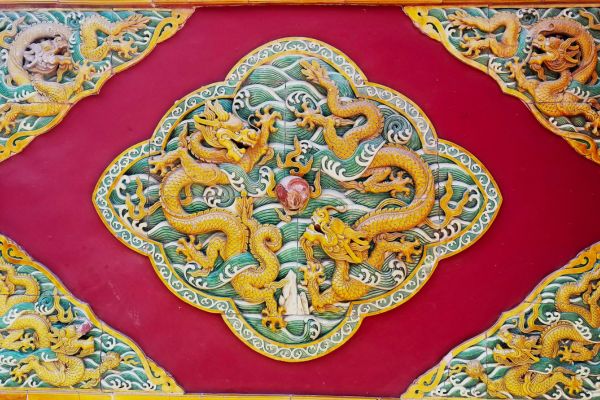
1. Performance Appraisal System in Chinese Courts
All Chinese courts have developed a performance appraisal system to measure judges’ performance. According to the Chinese Judges Law, the court will reward and punish judges based on the appraisal results. Chinese courts hope to guide judges’ behavior through this system. Therefore, the system is called a “baton” that commands judges and an “examination table” that measures their performance.
Since the late 1990s, Chinese courts have successively assessed conducted performance appraisals of judges. The Judges Law enacted in 2002 officially established the appraisal system for judges.
The SPC believes that the performance appraisal system can improve the judges’ performance, boost their sense of responsibility, and set up a reasonable management and supervision mechanism within the court. In fact, the performance appraisal system also reflects the hierarchical structure of Chinese courts.
2. Which Judges’ Performances to Be Assessed?
“The Guiding Opinion on Carrying out the Case Quality Evaluation Work” issued by China’s Supreme People’s Court (SPC) in 2008 and revised in 2011, stipulates how the SPC assesses the performance of courts at all levels nationwide and how courts at higher levels assess the performance of courts at lower levels. According to the SPC appraisal system, we can gain a picture of which performances of Chinese judges will be assessed.
The appraisal system consists of 31 performance indicators, which are divided into three categories: trial fairness, trial efficiency, and trial effect. In short, the SPC wants judges to resolve disputes faster, better, and more thoroughly.
(1) Indicators of Trial Fairness
There are 11 indicators in this category, which mainly assess the proportion of cases that have been overturned in all cases tried by a judge.
Among these indicators, the most influential one for the first-instance judge is the “proportion of the first-instance cases that have been amended and remanded for retrial”. According to the Chinese Procedural Law, when the court of the second instance (appellate court) believes that the first-instance judgment is wrong, it shall amend the judgment or remand it to the court of the first instance for retrial. It thus can be seen that from the perspective of Chinese courts, in terms of the judgments made by a first-instance judge, the higher the proportion of wrong judgments considered by the court of the second instance is, the more unfair the judgments in the first-instance are.
(2) Indicators of Trial Efficiency
There are 10 indicators in this category, which mainly assess whether the judge can conclude the case in the shortest possible time.
Among these indicators, the “proportion of closed cases within the legal (normal) time limit” and “the number of closed cases” have the greatest impacts on judges.
The “number of closed cases” is the number of cases that the judge has tried and concluded within a specific assessment period. This indicator is intended to motivate judges to try and close cases as many as possible.
The “proportion of closed cases within the legal (normal) time limit” refers to the proportion of the cases closed by the judge in all the cases within the time limitation prescribed by law. This indicator is intended to motivate judges to close the case within the statutory time limit.
In addition, there is another indicator that is not in the SPC appraisal system, but is used by many local courts, that is, “close rate”. This refers to the proportion of cases that a judge has tried and closed in the cases assigned by the court in a particular assessment period. The “close rate” is a supplement to the “number of closed cases”.
(3) Trial Effect
There are 10 indicators in this category, which mainly assess whether the judge can completely resolve the dispute between the parties. Such indicators reflect the goals that Chinese courts have long been pursuing: “The dispute between the parties is over when the case is closed.”
Among these indicators, the “first-instance compliance rate”, “mediation rate” and “withdrawal rate” have the greatest impacts on judges.
The “first-instance compliance rate” refers to the proportion of cases in which the parties comply with the judgment (that is, the parties have no appeal) in all the cases tried by a judge in the first-instance cases. This indicator is intended to motivate judges to completely resolve disputes between the parties through fair and proper judgments.
The “mediation rate” is the proportion of cases in which the parties have reached a mediation settlement agreement in all the cases. This indicator is intended to motivate judges to make the parties reach an agreement through mediation.
The “withdrawal rate” is the proportion of cases in which the plaintiff has withdrawn the lawsuit in all the cases. The indicator is intended to motivate the judge to prompt the parties to resolve the dispute on their own, thereby making the plaintiff drop the case.
3. Comments on the Performance Appraisal of Judges
First of all, the performance appraisal system has largely achieved the SPC’s expected goals. However, the extreme pursuit of these indicators by some judges has also led to the alienation of judges' behavior, thus undermining the said goals.
For instance, in order to help judges improve the “close rate”, the court would refuse applications for case docket at the end of a year, that is, when the appraisal period is coming to an end. This will prevent the proportion of closed cases in the total cases from being too low.
To cite another example, in order to increase the "mediation rate" and "withdrawal rate", some judges are keen to urge the parties to reach a mediation settlement agreement or to withdraw the lawsuit, and even by coercion and inducement in some rare cases.
Second, many judges also believe that these indicators impose unreasonable pressure on them.
For example, many judges believe that the high "appeal rate" does not equal to high error rate of judgments, because the mere fact that the parties are dissatisfied and appeal against the decision or file petition through letters and visits (in Chinese, the Xinfang (信訪) system), does not necessarily mean that the judgment is wrong.
For another instance, some cases are more complicated, so it will take judges a much longer trial period, but this will result in that their performance seems worse than that of other judges in terms of the “number of closed cases” and “average trial time”.
Despite this, due to the hierarchical structure of Chinese courts, the SPC is unlikely to abandon the performance appraisal system. Therefore, the SPC, local courts and Chinese scholars have been working hard to explore a more advanced performance appraisal system, such as optimizing performance appraisal indicators.
However, the traditional performance appraisal system still exerts an extremely significant impact on the judges' behavior. If you want to establish reasonable expectations about how Chinese judges hear cases, then you have to consider the role of the performance appraisal system.
Contributors: Guodong Du 杜國棟 , Meng Yu 余萌









